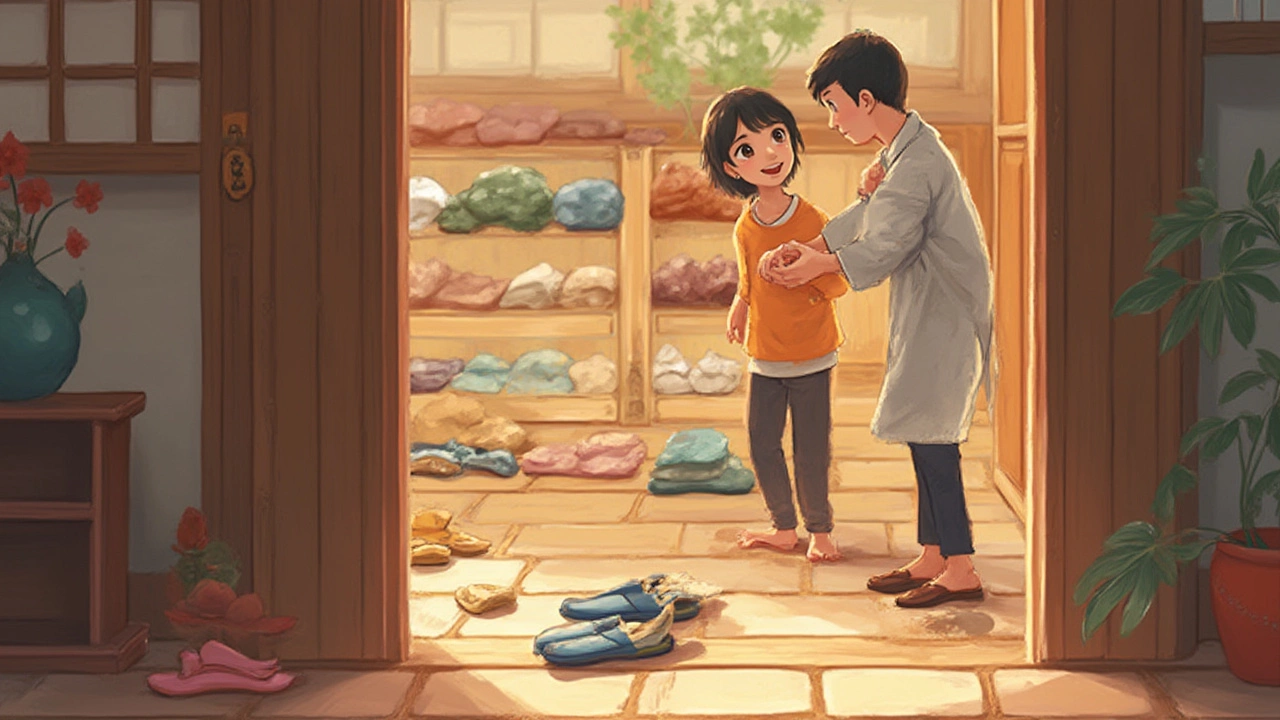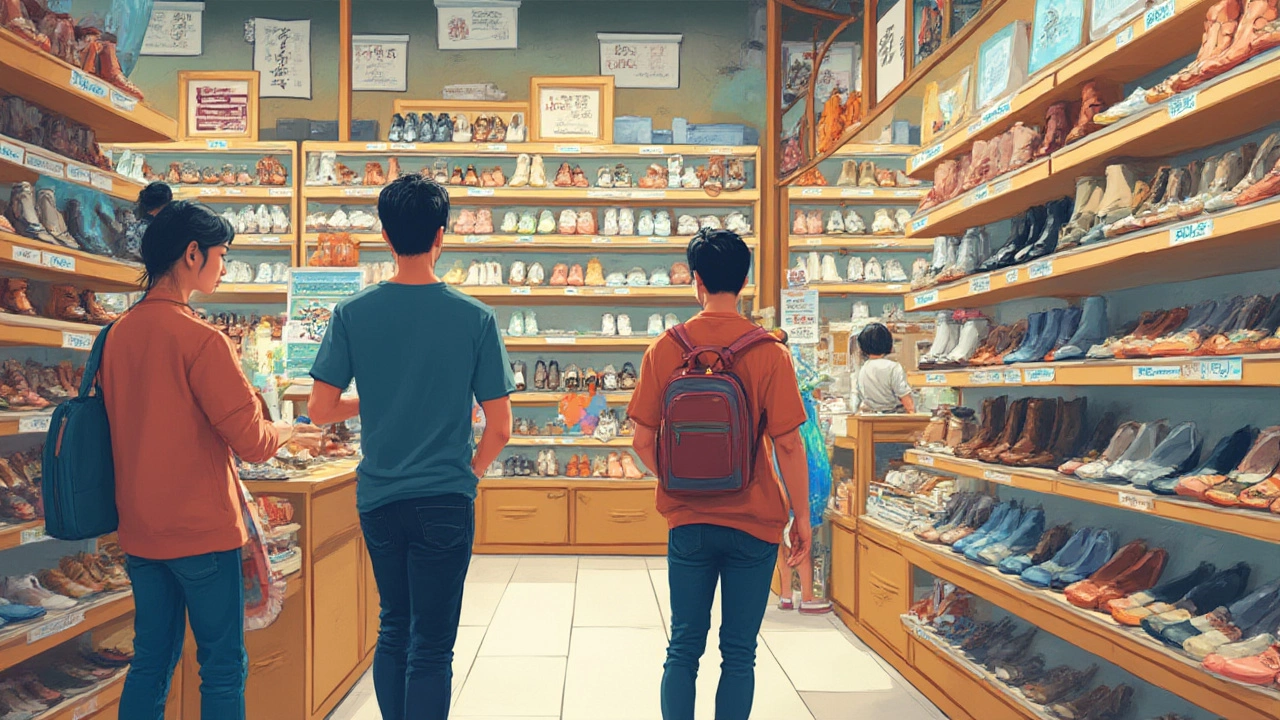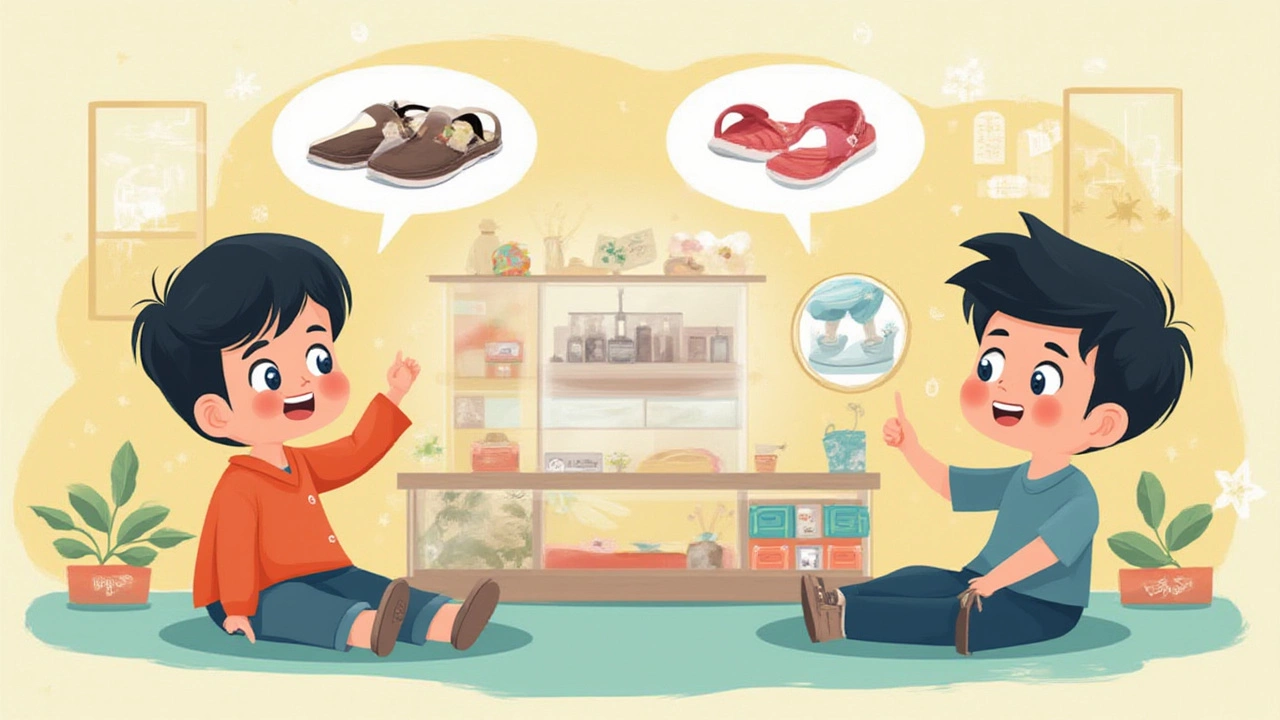What Do Koreans Call Slippers? A Deep Dive Into Korean Indoor Footwear Culture

Step into any home, school, or public space in Korea, and you’ll quickly notice something: nobody is wearing outside shoes indoors. Even at stylish cafes or traditional restaurants, there’s a pile of shoes near the door and a spread of slippers for you to slip on. Koreans have taken the simple house slipper and turned it into a daily essential and a cultural mainstay. But what do they actually call these slippers, and what’s behind the obsession with keeping floors shoe-free?
The Words Koreans Use for Slippers
So, what’s the Korean word for slippers? It’s pretty straightforward: “슬리퍼” (pronounced: seu-li-peo). Yes, it’s a straight-up Konglish word—this means it’s borrowed directly from the English ‘slipper’ and tweaked with Korean pronunciation. Walk through any convenience store or “Daiso” (a popular discount chain), and you’ll see signs labeled with “슬리퍼.” Even in supermarkets and apartment lobbies, you spot baskets of these with this word on a sign. Konglish isn’t the only way, though. In schools, gyms, and even public bathhouses, you might hear or see the word “실내화” (pronounced: sil-nae-hwa). This literally means “indoor shoes,” and it’s a term you’ll hear school kids and teachers say all the time.
This language thing pops up everywhere. For example, at elementary and middle schools, students bring their own set of "실내화" and switch into them every morning. There’s even a designated locker at the school entrance. Teachers walk around in fancy indoor shoes, but always swap out their outdoor heels or sneakers for something tidy and silent. Parents shopping for their kid’s school uniform list will always grab a pair of “실내화” before the first day.
What about in businesses or hospitals? Receptionists and workers often ask guests to "신발 벗어 주세요" (please take off your shoes) and will offer a sanitized pair of “슬리퍼.” There’s another, more traditional word: “덧신” (deot-shin), though this usually refers to slipper-socks or sock-like slippers—common in women’s bathhouses, spas, or Buddhist temples. Each word hints at a unique part of the Korean slipper code.

Slippers in Everyday Korean Life: Why the Fuss?
There’s a reason Koreans obsess over slippers, and it’s not just about keeping floors tidy. It goes back centuries, rooted in Korea’s tradition of “온돌” (ondol)—that’s the heated floor system found in most homes. The warmth comes from pipes or hot stones underneath, so it’s natural that everyone wants to keep those floors clean and comfy for socked or bare feet to sprawl out. Slippers are the go-between—not just for hygiene, but for comfort and temperature up-keep, especially in winter.
Kids are taught young that you never, ever run into someone’s house with your shoes on. Some households keep fancy slippers just for guests, usually in pastel or neutral colors. Does everyone get a pair to themselves? Not always. Sometimes the whole house shares a big basket by the entryway. Other homes have a "현관" (hyun-gwan) area right inside the door, lined with tidy shelves or bins of slippers, so you have no excuse.
Let’s talk about bathrooms—yes, even there, slippers matter. Most Korean homes have a pair of bright plastic “화장실 슬리퍼” (bathroom slippers) sitting at the door, and nobody would ever dream of mixing them up with bedroom or living room slippers. These are easy to rinse and dry, keeping germs from spreading. Step into the bathroom, swap into plastic slippers, and out you go—back into house slippers. Got a friend in Korea? Don’t be surprised if you’re gently scolded the first time you forget the indoor footwear shuffle.
And here’s an interesting stat: a 2023 survey by Korea Consumer Agency found that 83% of Korean households use slippers or indoor shoes every day, with 9 out of 10 preferring to walk barefoot or in slippers at home rather than socks alone. The drive for cleanliness isn't just about personal comfort—apartment-living in crowded cities makes people extra sensitive about dust and germs. Slippers keep the floors soft, safe, and silent for neighbors, too.

Tips, Shopping, and Slipper Styles in Korea
If you want to fit in (or just not feel left out), there are some fun things to know about the slipper scene in Korea. First, buying slippers (or “슬리퍼”) in Korea is almost too easy. Daiso, supermarkets, convenience stores, and even roadside vendors sell dozens of styles, usually for the equivalent of $2-$10. “실내화” for school kids—think cute characters, bold colors, and sometimes even custom embroidery—are everywhere in March, right before the new school year.
Bathrooms? Look for rigid plastic with drainage holes—the brightest shade possible so you don’t forget which pair goes where. Office slippers often look more like soft, fabric slip-ons, while home slippers are fuzzy, open-heeled, or shaped like every animal you can imagine. At fancy cafés or boutique guesthouses, you’ll find color-coded slippers for men, women, and kids. Karaoke rooms (노래방, noraebang) have communal pairs at the entrance, usually doused in sanitizer.
If you visit a friend’s place and see a whole collection of slippers at the door, it’s normal. Don’t grab the wrong bathroom pair! A quick tip for gift shoppers: slippers are a common present for housewarmings. Go for something practical, soft-soled, and washable (avoid anything white—they’ll stain too fast). If you’re taller, double-check the size. Many slippers in Korea only go up to a 260mm sole—that’s around a US men’s 8 or women’s 9.5—so visitors with bigger feet might need to hunt a bit harder.
For travelers, there’s another bonus. Most hotels and motels provide disposable “실내화” with their room amenities, and even Airbnbs usually have some options in a basket by the door—some with funny engravings or welcoming notes. Long-term students or expats often invest in a durable set of slippers that can survive weekly washing and years of hallway sprints. And guess what? Korean universities have their own branded slippers, proudly worn by students in dorm high-rises all over Seoul, Busan, and Daegu.
Shopping online? The major e-commerce sites (Coupang, Gmarket, 11st) sell mountains of options. Try searching for “슬리퍼” for general indoor slippers, or “실내화” if you want something specifically for school or sporty looks. Use “욕실 슬리퍼” for bathroom-specific pairs and “덧신” for slipper-socks. It’s fast, cheap, and often with next-day delivery. Want to browse in-person? Hit up Namdaemun or Dongdaemun markets for instagrammable, quirky slipper styles you never even knew existed.
| Term | Korean (Hangul) | Usage/Setting | Fun Fact |
|---|---|---|---|
| Slippers | 슬리퍼 | Home, office, school, everywhere | Konglish from "slipper"; universal in modern life |
| Indoor Shoes | 실내화 | Schools, kids' institutions | Mandatory for all students; comes in kid sizes |
| Slipper Socks | 덧신 | Spas, saunas, temples | Looks like thick socks, washable |
| Bathroom Slippers | 욕실 슬리퍼 | Home bathrooms | Plastic; rarely leaves the bathroom door |
What’s the bottom line? Slippers (“Korean slippers”) are way more than just a soft thing you toss on after work—they’re a language, a rule, and a ritual if you live in Korea or plan to stay for any length of time. Keep a pair handy, remember the different types, and you’ll earn smiles every time you walk through a Korean doorway. Don’t be surprised if, after a few weeks, you start carrying a favorite pair in your own bag—just like a local.
- Jul, 31 2025
- Violet Greenfield
- 0
- Permalink
Written by Violet Greenfield
View all posts by: Violet Greenfield